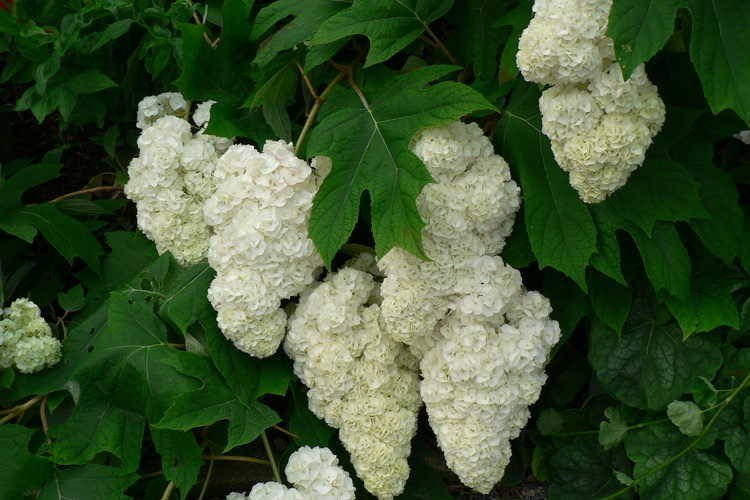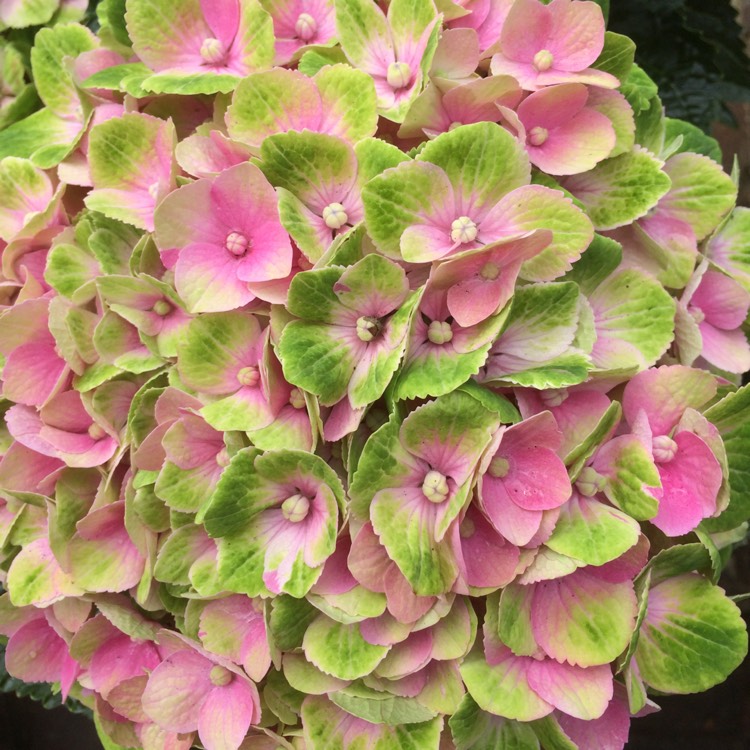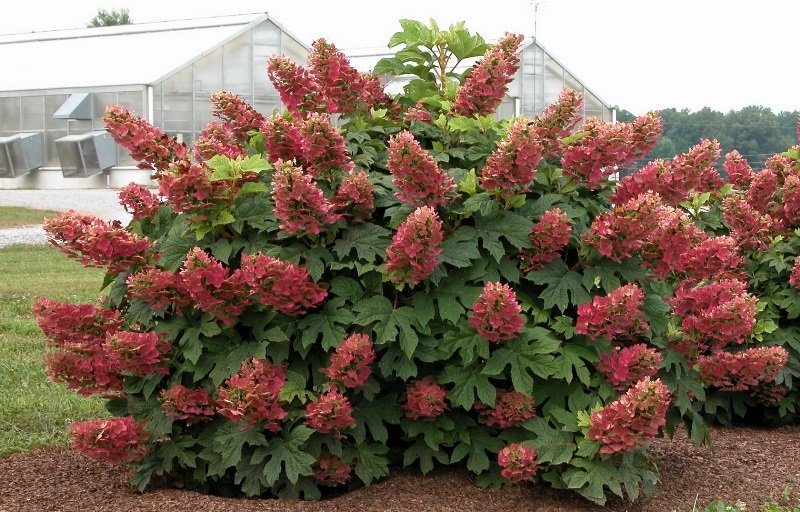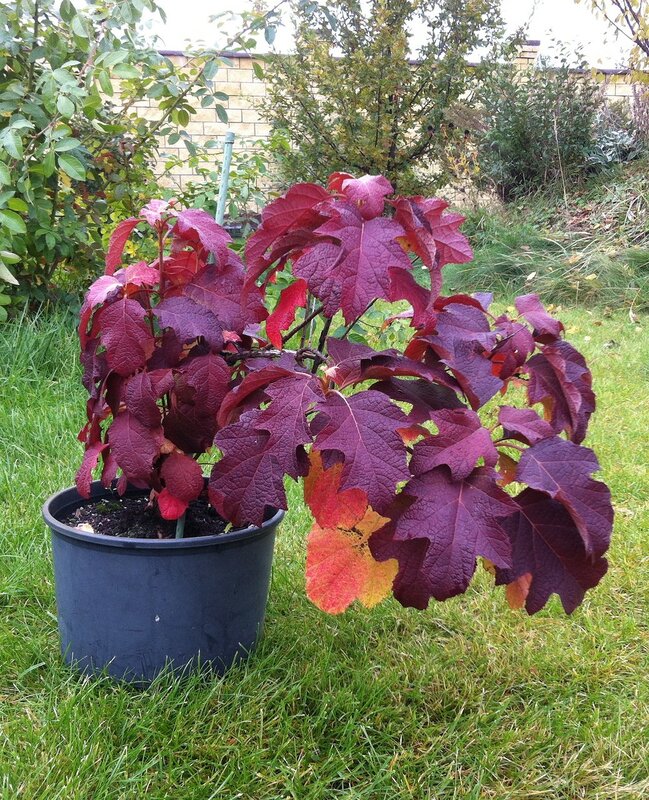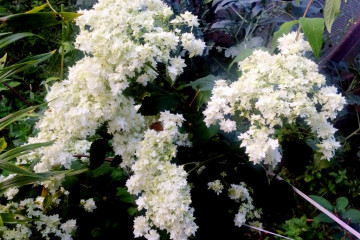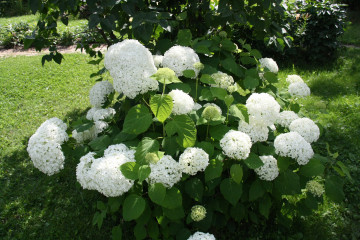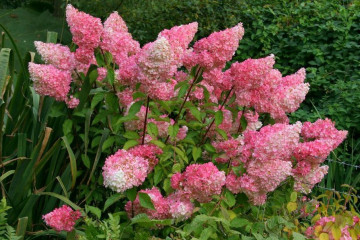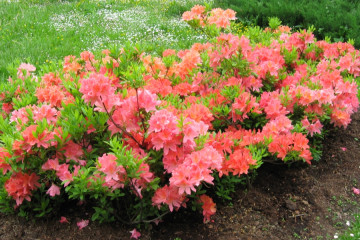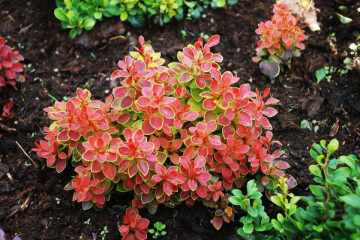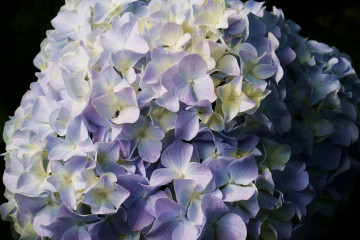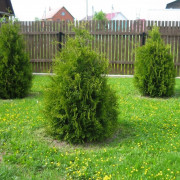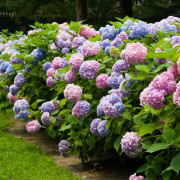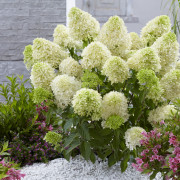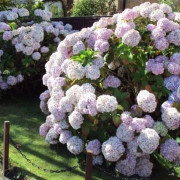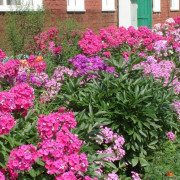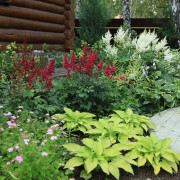Hydrangea Dubolistnaya - winter-hardy varieties, planting and care
Content:
In the suburbs and the Moscow region, you can often find different types of hydrangea on personal plots. Broadleaf is planted more often than other species due to its unpretentiousness. Oaky hydrangea, in contrast to it, grows worse and rarely blooms in central Russia due to its photophilousness and low frost resistance.
The origin and appearance of oaky hydrangea
The plant came to our region from tropical latitudes, it differs in height up to 1-3 m. The leaf is oblong, the edges are jagged, up to 25 cm long. The inner surface of the leaf is velvety to the touch, like that of the Canadian red oak, for which it received its name. In a young plant of the first year of life, the surface of the stem and leaf is covered with fluff.
The inflorescences are large, do not have a pronounced aroma. Their shape is paniculate, up to 30 cm in diameter. The flowering period is short, begins at the end of July and ends a month later.
The first ancestors of the plant appeared in the Middle Ages in Europe (approximately the XIV century), imported from Asia. The sprouts could only be purchased by the wealthy population of France and Great Britain. On the territory of Russia, color appeared in the 19th century.
The origin of the plant is associated with a legend. The girl fell in love with a young man far from home. Her parents couldn't let her marry a poor guy. When it was time to part, she cried bitterly. In this place, a plant with marvelous flowers has grown.
Winter-hardy varieties of oak-leaved hydrangeas
The plant rarely blooms in mid-latitudes due to the short daylight hours and low temperatures in winter. Due to its tropical origin, the bush requires special conditions of detention. Artificially bred species adapt to low temperatures, feel comfortable down to -29 ° C.
Snow White Domes
Among other varieties, oak-leaved hydrangea is often found. It is characterized by light green to dark foliage, up to 20 cm long. The shrub rarely exceeds 2 m, and is distinguished by abundant flowering. The shape is domed, each panicle is composed of small white elements similar to a snowflake. This hydrangea is drought-resistant and winter-hardy, but under conditions of Siberian frosts it can die.
Burgundy
The burgundy variety grows up to 1.5 m. According to the name, the flowers have a deep purple color, with a diameter of up to 15 cm. The plant can withstand low temperatures, but does not tolerate drought. Shoots grow slowly.
Magic Amethyst
Inflorescences are spherical, up to 25 cm in size. For planting hydrangea oakleaf amethyst, an open place without shade or with a partial location outside the sun is more suitable.
The bush is considered compact, reaches a width of 90 cm, and does not grow more than 1 m in height. This variety belongs to chameleons, flowers change color when the acidity level changes. In the spring they are lemon green, then turn to a pink tint.Closer to autumn, the receptacle at the edges acquires a green edging.
Tennessee Clone
The inflorescences of the plant are medium-sized, about 12 cm in diameter. The color is white or cream. The variety prefers keeping in acidic soil on the sunny side.
Snowflake
The bush has a height of about 1.5-2 m. The inflorescences are large, white. By the end of flowering, they turn into a purple hue. According to the description, the foliage of this variety is capable of changing color by the end of the season from green to burgundy.
Harmony
The plant has dark green leaves, velvety to the touch. The edges are carved, consist of 3-7 blades, by autumn they change color to orange or burgundy. The inflorescence of "Harmony" is conical, up to 30 cm long. The bunch is so heavy that the plant may need support. The inflorescence is prefabricated, consists of many elements, 2-3 cm each. The bush does not tolerate shade. Average frost resistance, up to -250.
Transplanting oak-leaved hydrangeas after purchase into open ground
To transfer a plant purchased on the market to the ground in front of the house, you need to create favorable conditions for growth. It is also necessary to transplant the bush if it does not bloom in the old place or grows poorly. Changing the location is best done in spring, the end of May is optimal.
What is needed for landing
To plant a hydrangea, you need to prepare a planting pit. Its size depends on the age of the shoot. A sprout under 3 years old is enough 50 cm2, up to 5 years - 1 m2, older than this age - 1.5 m2. The pit should be 2 times larger than the volume of the plant with a lump of earth. A few days before planting, it is half-filled with a mixture of humus, peat and sand, where phosphate and potassium fertilizers are added.
Choosing the best place
The bush loves open space, but does not tolerate sunlight. Partially it can be placed in partial shade. When placed in the sun, the plant will need frequent watering, otherwise sunburn may form on the leaves.
Step-by-step planting process
After filling the hole with a nutrient medium, you need to place a sprout, cover it with earth to the top and compact the soil. After that, the landing site is watered in a volume of at least 10 liters.
Reproduction of oak-leaved hydrangeas
Reproduction of a plant is possible in several ways: by seeds, apical shoots, cuttings, layering. The first method is effective if you take the material from the nursery. The seeds are placed between 2 layers of cotton wool, put in a saucer, and poured with water. After germination, they are planted in a nutrient medium. Transferring to open ground, the material is sprinkled over the garden bed, slightly sunk in the ground, and watered.
Propagation by cuttings
Cuttings containing 3 leaves are cut in mid-July. The end of the appendix must be placed in a growth stimulator solution, then planted in the ground. Rooting takes 1-1.5 months. The soil needs to be moistened daily, keeping the temperature around 20 ° C.
Growing from cuttings
The lower part of the shoot, if placed in soil, can give rise to roots. To do this, an incision is made on a long process of the lower tier, the layering is added with earth. The first year this part takes root. On the next, you can cut off the process from the side of the mother bush.
Dividing the bush
The division of the hydrangea by the root system is done in early spring. You need to choose an shoot, separate part of the root system with a shovel. Then move to another landing site.
Oaky hydrangea care
To ensure the growth of the bush, you need to not only choose the right planting site, but also take care of it. To do this, they study how to properly water the plant, what conditions are needed for keeping in summer and winter.
Watering mode
For high-quality care of hydrangea, you need to water and irrigate it regularly. To moisten the soil, you need at least 10 liters of water in the summer, 2 times weekly. In spring and autumn, watering is halved.
Top dressing
The first weeks after planting, feeding is not required. Then nutrition with microelements is carried out monthly. When buds are set, potassium and phosphorus based fertilizers are suitable.
Features of care during the flowering period
Directly during flowering, the plant is not fertilized so as not to provoke the buds to fall off. It is necessary to moisten the soil in a timely manner, cut off the shoots growing inside the bush. Dried leaves and dry shoots also need to be removed.
Features of care during the rest period
Before wintering, you need to cut off non-viable old shoots, dry foliage and flowers.
Preparing for winter
Wedge-shaped hydrangea after the first growing season needs to be transferred to heat for the winter. To do this, they dig it into a pot and move it home. The number of watering is reduced, the pot needs darkness. After April, the container is transferred to light, watered with warm water and fertilizers. If a harsh winter is not typical for the region, then it is permissible to cover the shoots with spruce branches, pressing them to the ground.
To make the oak-leaved hydrangea feel good in your area, it is enough to provide it with proper care. There is nothing difficult in this.
